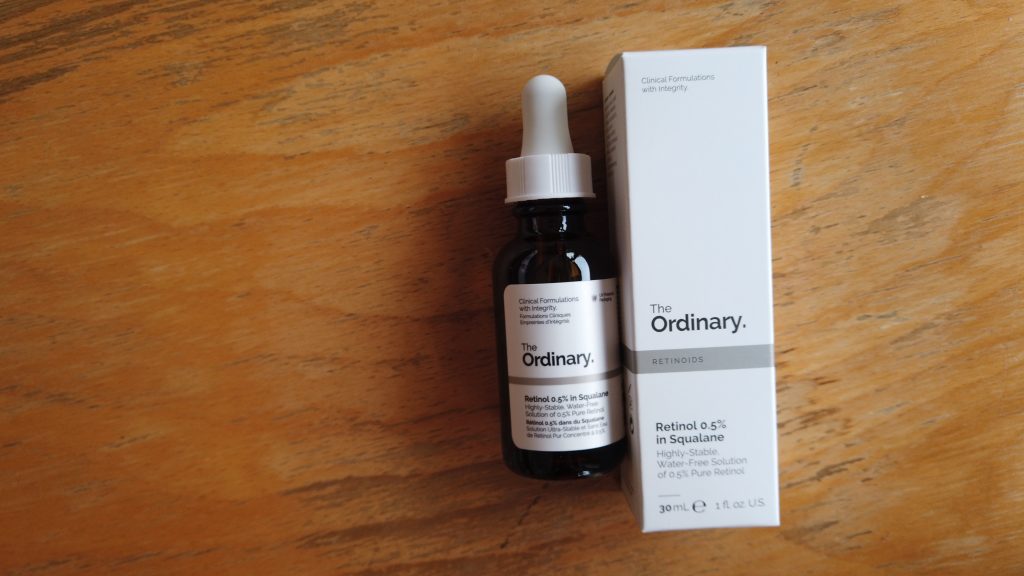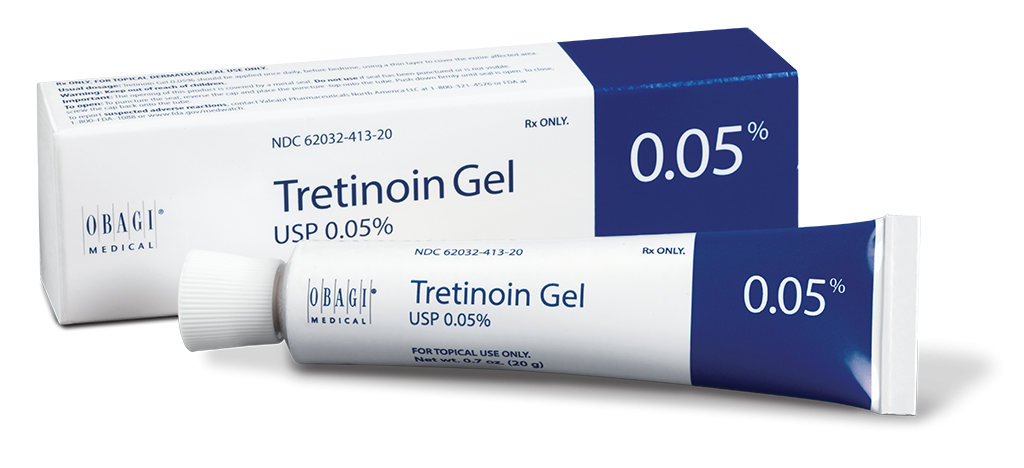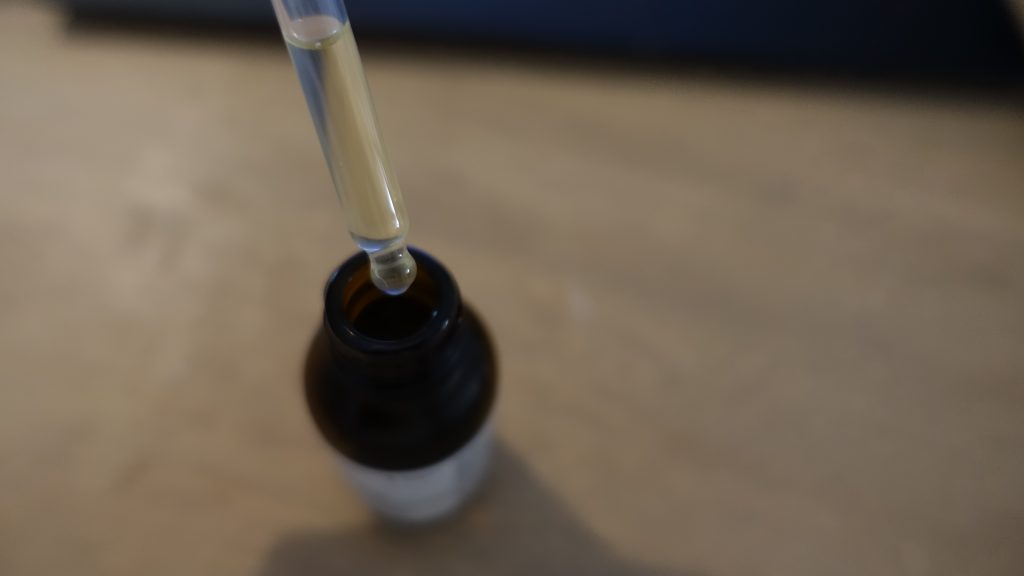This post is also available in:
 Français
Français
What is retinol?
Since humans are unable to synthesize vitamin A, they must obtain it from food, either in the form of retinolor esters. Retinol does not act directly on the target cell; it requires intracellular enzymatic transformations to reach its biologically active form, retinoic acid. Several research studies have demonstrated the effectiveness of retinoic acid on acne, psoriasis and skin aging.
Retinol vs. Retinoid
We also talk about Retinoids (Retinoid), which includes under this name all derivatives of retinoic acid.
Thus, retinol is a retinoid, but a retinoid is not necessarily retinol, because it can be an ester, tretinoin, granactive…
Types of Retinoids
It is important to understand that not everyone spreads retinoic acid directly on the skin. Because it is a highly concentrated product and available only by prescription. This is why most products available to the general public use Retinoids, retinoic acid derivatives.
Depending on the type of retinoid, retinoic acid is obtained after 1 or 3 conversions, i.e. the esters convert to retinol, which then convert to retinaldehyde, which finally convert to retinonic acid. With each conversion, one loses 10 times in concentration. For example, an ester concentrated at 10%, after 3 conversions, is equivalent to about 0.01% concentration of retinonic acid.
Conversion” path :
Ester (retinol propionate, retinyl palmitate, retinyl acetate)
=> Retinol
=> Retinaldehyd and Hydroxypinacolone retinoate (retinoic acid ester)
=> Retinoic acid (retinoic acid/tretinoin)
Thus, retinoid in ester form is the mildest, and the retinoic acid form is the strongest.
We have other retinoids such as Adapalene and Tazorac which give a factor of 5: 0. 1% in Adapalene or Tazorac is equivalent to 0.025% in retinoic acid, so by integrating these retinoids, we have, in increasing order of potency :
Ester (retinol propionate, retinyl palmitate, retinyl acetate)
=> Retinol
=> Retinaldehyd and Hydroxypinacolone retinoate (retinoic acid ester)
=> Adapalene and Tazorac
=> Retinoic acid (retinoic acid/tretinoin)
To compare the power of each retinoid, blogger Caroline Hirons uses a very simple example: coffee.
Latte (ester)
=> Cappuccino (Retinol)
=> Espresso (Retinaldehyd, Adapalene, Tazorac)
=> Double espresso (Tretinoin)
I have seen a lot of before/after pictures with incredible results: cystic acne disappeared, wrinkles disappeared… but I have also seen a lot of the opposite: skin with a few poor wrinkles that became all red and full of pustules… so you have to get your skin used to it, starting with very soft products (ester), to Retinol, then Retinaldehyd and finally the Tretinoin graal. From one stage to the next, it takes 4 to 6 or even 1 year. And even those who switch to Tretinoin must start with a small concentration and then slowly increase. In addition, as soon as you use the retinoids, you must spread sun cream on your skin.
Now that I’ve explained all this, I’m going to give you my opinion on some top products (I’ve tested some of them)
Ester

The famous A313 cream is one of them. It is sold freely in pharmacies and Americans are spreading the word to buy some from us in France because it is cheap and available over the counter. Honestly, I have no opinion on this product because all the reviews I read are rather negative. The texture is not pleasant (too oily) and as it is a very soft retinoid, people don’t see any effect and throw it away very quickly.
Retinol
I used 2 products :
- A-Passioni by Drunk Elephant, with a concentration of 1% Retinol, equivalent to 0.01% retinonic acid
- The Ordinary 0.5% Retinol, equivalent to 0.005% retinonic acid
I bought the miniature version ofA-Passioni of Drunk Elephant (Amazon link) because the product is to be used 12 months after opening and you use the size of a pea each time

The miniature version is always sold with the miniature version of the brand’s moisturizing serum. I think it’s a smart choice: retinol dries the skin, selling both together forces the user to moisturize the skin and protect it from the undesirable effects of retinol.

I have to say it’s my favorite retinol! Everybody emphasizes the high concentration of this retinol, but paradoxically it is the one that hasn’t had any negative effects on me. Each time I use it, the next day I wake up with a new skin, softer, more homogeneous, it’s superb! I only use it in the evening, and every other time and then I generously apply a huge layer of moisturizer. If I still use retinol, it’s thanks to this product, because there are very advanced technologies now that give almost the same effect as retinol, without peeling the skin, like NIOD NAAP (which I’ve talked about at length here) and NIOD CAIS 2.
The Ordinary 0,5% Retinol (link The Ordinary, link Sephora), half as concentrated as A-Passioni by Drunk Elephant, curiously, gave me pimples.

This retinol is bathed in oil (squalane), I don’t know if it’s the retinol from The Ordinary or the squalane that I don’t like, but I don’t like this product at all. Dermatologist Shereen Idriss also expressed her dubious opinion about retinols bathed in oil, because retinol likes oil and if possible, it will stay in oil, instead of converting and doing any work to the cells. So it strongly discourages products where retinol is delivered in oil Attention, it must be kept in the fridge as soon as you open it.
Hydroxypinacolone retinoate
The Ordinary also has products containing Granactive Retinoid (Hydroxypinacolone retinoate) (link The Ordinary, link Sephora). Please note that 5% Granactive Retinoid is equivalent to 0.5% Hydroxypinacolone retinoate (HPR). I have not tested it because there are very few studies on this active ingredient, unlike retinol.
Retinaldehyd

This is the active ingredient found in the Avène Triacnéal. The first time I used this product, I followed the instructions and spread it all over my face. It became horrible afterwards, with more pimples, more redness and I threw it in the trash. After reading other reviews, I decided to buy it again but this time I only put it on the pimples. Apparently, it’s better that way. The equivalent of a pea is enough to cover all the buttons, even the active ones. And they disappear quickly, but these old pimples still leave behind a mini-area of skin that peels for several days after they disappear.

Adapalene

Differin is a balm containing Adapalene and has been prescribed by my dermatologist for my cysts and pimples. I threw it away very quickly because the micro cysts come up and turn into pimples with stench (I prefer micro cysts in this case) and it keeps appearing, again and again and I don’t see the end of this painful cycle. Knowing that I use Differin basically to have fewer pimples, not to create more pimples for myself. I came to the conclusion that it was too strong for me. This cream is a nightmare for me, I will never touch it again.
Tretinoin

So I’ve never used it because if I can’t stand Adapalene, how can I stand Tretinoin? Many women want to ask their doctors for a prescription of Tretinoin, for its anti-aging effects, but many doctors are afraid and refuse to prescribe this type of cream in France (which also presents a risk for pregnant women) for purely aesthetic purposes when the person has not used even a single drop of retinol in her life.
I hope you enjoyed this article. See you soon for more reviews
This post is also available in:
 Français
Français






Hi there. Actually, retinaldehyd is gentler than retinol (but of course a really strong retinaldehyd can be more irritating than retinol) in terms of how efficient they are, i.e retinaldehyd is more efficient. Granactive retinoid is also more efficient and gentler than retinol. I would stick to these version of retinoids and stop throwing them out. It’s not uncommon to go through a phase of skin getting worse before it gets better. My absolute favorite products are Geek & Gorgeous Retinal 1.0 (same ingredients as super expensive Medik8), Epiduo (adapalene and bensoylperoxide), Differin and Pudderåserne A-serum 5% (a granactive retinoid). Before I used these I used The Ordinary’s Granactive Retinoid Emulsion 2% for quite a while to get my skin used to retinoids. I also really like Verso 8 Night Cream (that retinoid is called retinyl retinoate and is in the most expensive of Medik8:s products). Verso is quite expensive. I don’t use retinol anymore (why when retinaldehyd and gransctive retinoid is more efficient, gentler and to be found in less expensive products?), but one that I did like when I still tried out various retinoid is Dermaceutic 1.0. Kindly/Pia Hellgren